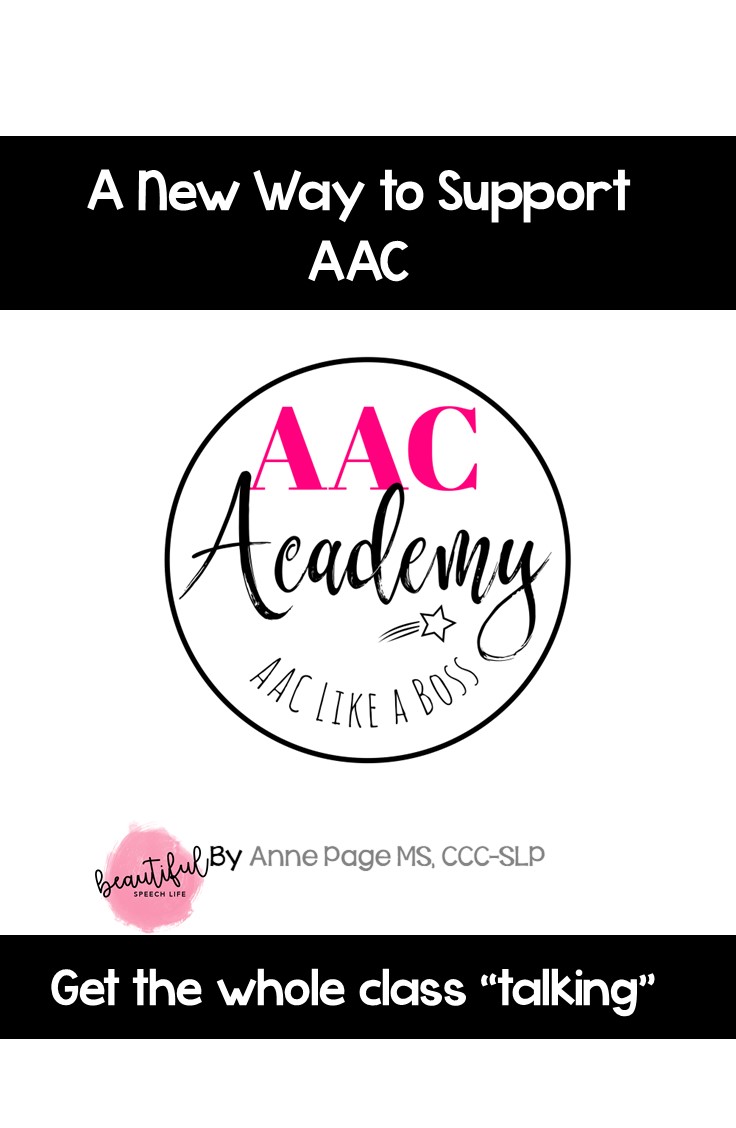
by Anne Page | Jun 13, 2016 | AAC, Autism, Therapy Ideas
Last week I shared 3 tips on how to AAC Like a Boss. They were:
- You don’t have to know everything
- Be Resourceful
- You don’t have to start high-tech
To continue along this line, today I want to talk a little bit about how I used all three of these tips to make a breakthrough for one of my students.
I’ve been doing group therapy with students who are working on functional communication for the past nine years. I don’t know about you, but I get really discouraged when my students don’t make progress. However, I think I was setting the bar too high too soon. Of course I want them to be able to communicate their wants and needs. There are just so many little steps to getting there; it can take a really long time!
This year I started using The Dynamic Learning Map Core Vocabulary; a list of 40 words that have been proven to be most effective socially and academically for students with significant cognitive disabilities. Developed at the Center for Literacy and Disability Studies at The University of North Carolina at Chapel Hill, these 40 words are based on AAC research.

My Core Vocabulary Board
This is both low tech and resourceful. Plus I really didn’t know everything about it, but I did do my research and know that it’s backed by evidence. I made a core vocabulary board for my room and decided to see what happened.
Let me tell you a little story to illustrate my point. I’ve been working with a little guy, let’s say his name is Benjamin (it’s not) for the last four years. Benjamin came to our school as a kindergartener with a diagnosis of Autism. He was nonverbal. His IEP from preschool had a following one step directions goal and an expressive language goal to “communicate his wants and needs using total communication”.
For the first two years, Benjamin had to learn to follow classroom routines and follow directions. His sensory integration needs were high and we were trying to figure out how to meet them. I felt like a total failure as an SLP. He didn’t say words, he didn’t use signs, and he didn’t have joint attention. He stayed in his own little world. But, he did learn to follow simple directions with visual and verbal prompts.
We have a little farm at our school and Benjamin was really interested in the animals. It was motivating and calming to him to be able to watch them. Soon he started labeling them. His parents bought him little plastic animals and taught him the names of over 100 animals. Progress, sort of. He still didn’t greet, comment, request or command. There was no joint engagement or joint attention. No pointing. He was just naming the animals for his own benefit. Not looking to see if we were listening, not wanting to share his discovery. If he couldn’t physically go get what he wanted, he would guide an adult’s hand to the item. Benjamin demonstrated echolalia and a lot of screaming.
Then we he was in second grade we taught him to request by labeling. We used beads, which he loves to roll and toy animals, which he loved to line up. I was able to get some eye contact by holding the item he wanted by my eyes. He had to look at me and say what he wanted. After a while, we (me, the paraprofessionals, the teacher and his parents) got him to add “I want” but he needed a verbal prompt each time.
Benjamin got an iPad with TouchChat that he was able to use but he hasn’t been too interested in it.
This past school year, he changed classrooms and it took a good four months for him to settle into the new routine. His communication progress was at a standstill. Actually, he even regressed.
I was so sad. I had just told his mom that I wasn’t making any progress with him in group therapy sessions. He was falling asleep, or hanging off of his chair or screaming; sometimes all three in one session. The other kids were so distracted. I made arrangements to see him for individual therapy for a while.
The next day, Benjamin’s teacher forget to tell the aides about the new schedule and they brought him to my room with the group. I said, okay let’s just try one more time.
I was introducing the new core vocabulary board I made and planned to teach the command “go’ through the use of the picture symbol. I set up a little miniature bowling game on the table. I noticed I had Benjamin’s attention, so I let him go first. Big Therapy Win! He participated with minimal prompts for the first time ever. He loved the Core Vocabulary Board with the bowling. In this picture, he’s waiting, holding the ball until we (his classmates and I) say “go”. We had joint attention, joint engagement with PEERS, and smiling. I wish I would’ve filmed it.

Therapy Win!
That was in January. Ever since then, he’s been participating. I keep the sessions really active with pop-up toys, wind-up toys and balls. So far he’s learned “go”, “stop”, “want”, “more”, and “I”. In April, he was able to put together this sentence “I want more go” using the picture cards and verbalizing. So exciting!

Core Vocabulary
What is it that worked? I believe it was a combination of timing, high interest activity and the Core Vocabulary visuals.
I am really looking forward to seeing what is the next step for my friend Benjamin.
So my point is…Patience Grasshopper.
We have to keep trying new approaches. I knew Benjamin was really visual and had tried some pictures before with little success. The Core Vocabulary words are immediately applicable and they can be used for fun, functional communication.
I really encourage you to try using DLM Core Vocabulary Words. As I learn more about this, I will definitely share the information with you all. I made a little cheat sheet and resource guide for you to help you get started. I know it can be a little overwhelming when you start out, so I streamlined it for you.
Until next time…SLP Like a Boss,
Anne
If you are looking for help with core boards, then download your condensed guide to core boards by clicking the green box. You’ll find links to popular AAC boards, along with tips to get started.


by Anne Page | Mar 29, 2016 | SLP Like a Boss, Therapy Ideas

(This photo is very tongue in cheek btw, just in case you don’t know me very well yet) [spacer height=”20px” id=”2″]I learn new skills in layers. I bet you do too.[spacer height=”20px” id=”2″]
First, I figure out the new vocabulary and jargon. Next, I figure out the general structure and maybe how other people have done it. Then I look at what the basic expectations are.[spacer height=”20px” id=”2″]
I spend some time practicing and with time build the skill. This applies to how I practice speech therapy, too.[spacer height=”20px” id=”2″]
My SLP journey was first get a bachelor’s degree, then work as an SLPA and SLT to get hands-on experience. I really thought I knew a lot (I did but not as much as I thought I did).[spacer height=”20px” id=”2″]
Then many years later I got my master’s degree. That was the layer of theory, clinical practicums, and clinical fellowship. This came with a whole lot of stress and a really HUMONGOUS learning curve. That was just three years ago.[spacer height=”20px” id=”2″]
Now I find myself moving to another deeper layer.[spacer height=”20px” id=”2″]
I’m calling it metatherapy. Thinking about thinking about therapy.[spacer height=”20px” id=”2″]
Instead of doing therapy and evaluations just to get them done, I’m asking myself a lot of big picture questions. [spacer height=”20px” id=”2″]
Questions like: I know my students need to build their vocabulary but what is the one skill that is going to help them the most? Yes, they need to know synonyms, antonyms, and categorization. But they also need to be able to transfer these skills to all the new vocabulary they will be exposed to throughout their school years. Of course, I look at best practices. And I’m thinking beyond that too.[spacer height=”20px” id=”2″]
How can I make them fall in love with words?[spacer height=”20px” id=”2″]
How can I make them love descriptive terms and all the beautiful nuances?[spacer height=”20px” id=”2″]
How can I make them excited that there are 16,000 different species of trees?[spacer height=”20px” id=”2″]
How can I make sure that when I ask them to tell me about a tree, they won’t just say it’s green and it grows.[spacer height=”20px” id=”2″]
I want them to be able to tell me a tree gives us shade in the summer, that we can climb it, that it can be a home for squirrels. It can have pecans or peaches or pine cones. It can be covered in pink blossoms in the springtime or flaming red leaves in the fall. That the leaves make music when they rustle in the wind. That trees shelter us and give us wood for fires. That some trees can tower to over 360 feet. That trees can have a multitude of different leaf shapes and shades of delicious green. That their bark can be smooth and cool or rough and scratchy. That trees can gather together to create a sacred space.[spacer height=”20px” id=”2″]
I want to open that world for them, to help them see and form beautiful word pools in their little brains. Such a beautiful, sparkling goal.[spacer height=”20px” id=”2″]
But of course, reality dictates that we have to write measurable, curriculum based goals. (And I do).[spacer height=”20px” id=”2″]
But is that our ultimate therapy goal? [spacer height=”20px” id=”2″]
Is it to have a student learn “x” number of new vocabulary words or is it to help him build a rich lexicon by inspiring him to read, ask questions and get excited about learning?[spacer height=”20px” id=”2″]
When I read Donalyn Miller’s book “The Book Whisperer” and understood how she thought outside the box with her approach to reading, I wanted to take that approach to language and language therapy. (I’ll put a link at the end of this post if you want to know more about this book).[spacer height=”20px” id=”2″]
I will keep digging, experimenting and exploring this juicy approach to therapy because it feels so right.[spacer height=”20px” id=”2″]
And of course I will share everything with you.[spacer height=”20px” id=”2″]
I do know that a good start is to share our love of words and language with our students.[spacer height=”20px” id=”2″]
We can find what really fascinates them and help them expand the subject and learn more. We can do that by walking them through our thought process, so they can start building those neuronal pathways for themselves.[spacer height=”20px” id=”2″]
This just makes me fall in love with speech language therapy all over again. I’m so meta (meta’s in the Urban Dictionary, check it out).[spacer height=”20px” id=”2″]
Meta Speech Language Therapy: it’s mindful, it’s looking at each child as an individual. It’s giving students a valuable gift not just applying a “speech band-aid”.[spacer height=”20px” id=”2″]
So what do you think? Are you with me?[spacer height=”20px” id=”2″]
Leave a comment below.[spacer height=”20px” id=”2″]
Go think deep thoughts and SLP like a boss,[spacer height=”20px” id=”2″]

by Anne Page | Sep 12, 2015 | Blog, Inspiration, Quick Therapy Tips for the SLP and SLPA, Therapy Ideas, TPT Products, Uncategorized
 School is back in full swing for me.
School is back in full swing for me.
Are you like me and tell yourself that you’re going to be more organized this year? (And say it every year?)[spacer height=”20px”]
This year I’m actually doing it-not perfectly of course. But I have to say Teachers Pay Teachers (TPT) has made my life sooo much easier. When I first discovered TPT, I was just downloading freebies left and right and buying products that were cheap.[spacer height=”20px”]
Now, I’m a little more discriminating. Just because something is free or inexpensive doesn’t mean it’s the right product for me.[spacer height=”20px”]
Here are 6 ways that I use TPT to make me more organized and the therapy materials I need at my fingertips.[spacer height=”20px”]
1. Buy staple items that you know you can use every year.
Here is my list for K-3 (yours may look different, you’ll customize to fit your needs)
Articulation rings, flipbooks
Following Directions
Middle School:
Articulation (s, l, r)
Vocabulary: grade level antonyms, synonyms, homonyms, context clues
Inferencing
Grammar: verbs, adjectives
Book Companions
[spacer height=”20px”]
Watch for items that are Core Curriculum Aligned.[spacer height=”20px”]
2. Consider your teaching/therapy style.
Do you like worksheets and paper/pencil activities or do you motivate students through cards and games?[spacer height=”20px”]
Get products that you can easily picture yourself using. Do you need activities with no or low preparation time? Or do you love having colorful,laminated materials and don’t mind cutting laminated items while you watch the latest episode of The Bachelor?[spacer height=”20px”]
Purchase items that will fit into your way of doing things.[spacer height=”20px”]
3. Don’t re-invent the wheel.
You can get planners, data sheets, forms, posters, homework sheets, brag tags, and punch cards on TPT. Get SUPER organized by using them.[spacer height=”20px”]
4. Find your favorite sellers
Once you start purchasing items you’ll find sellers that seem like they are making products just for you. These sellers are gems! Follow them and show them some love by giving feedback on their products. (Especially the freebies)[spacer height=”20px”]
When I need something I save myself time by searching their stores first (less to scroll through than when I do a site-wide search).[spacer height=”20px”]
5. Buy seasonal and holiday items as little treats to keep your sessions fresh and fun. (for your students and for you)[spacer height=”20px”]
Kids get so excited about holidays (so do I). Fun seasonal materials can breathe new life into concepts you’ve been working on.[spacer height=”20px”]
6. Give some thought to how you store your TPT products[spacer height=”20px”]
You want them to be easily accessible. I use Globe-Weiss clear plastic envelopes with colored ziptops (from Amazon). I print the product cover page and place inside to use it as a label. These are really sturdy and can stand on a shelf.[spacer height=”20px”]
So there you have it, 6 easy ways to help you be organized, effective and fun by using TPT. Which tip will help you the most? Leave a note in the comments below. [spacer height=”20px”]
Happy Organizing,
Did you like this post? If you did please share with your friends! And head on over to my TPT store to find some fun organizational and game-base products.
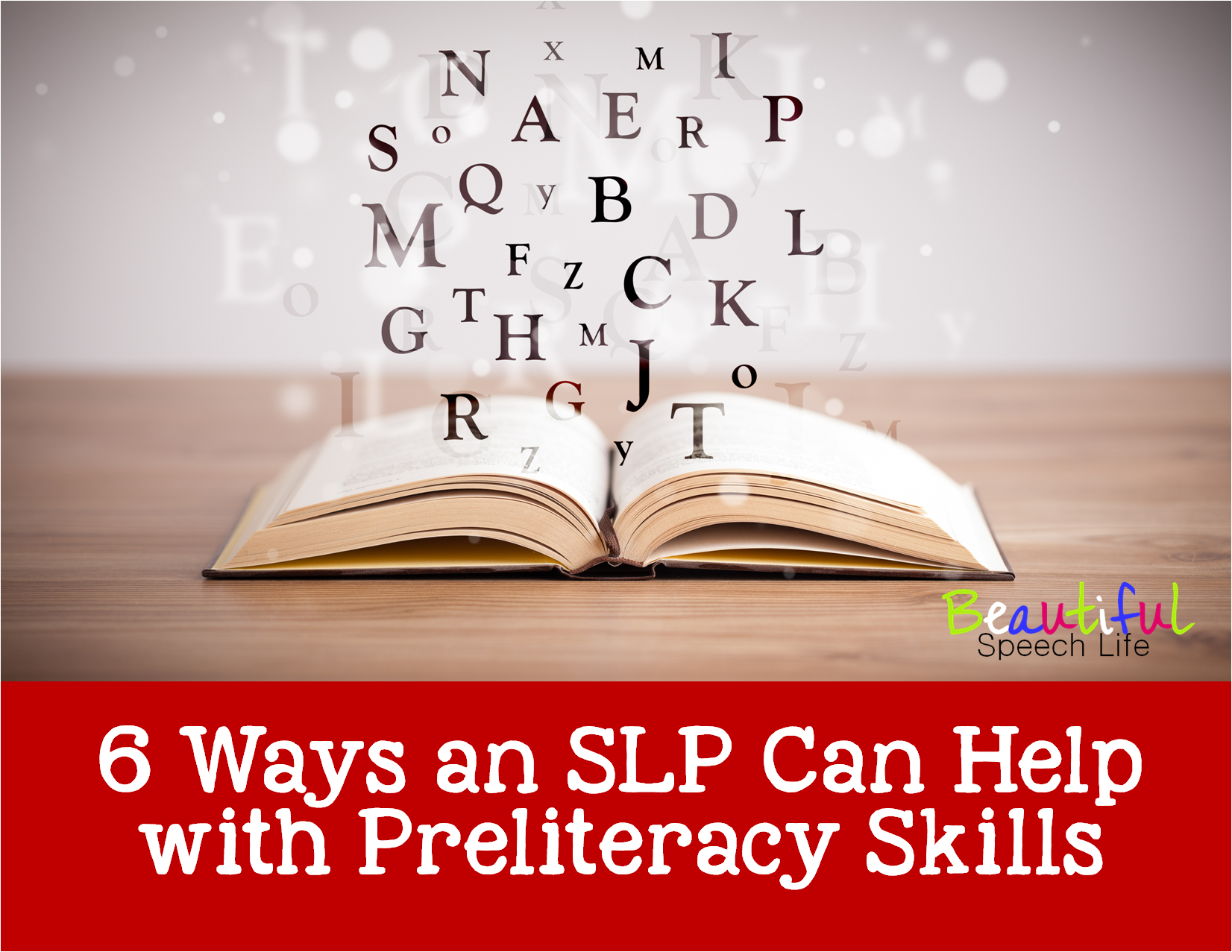
by Anne Page | Sep 3, 2015 | Blog, Therapy Ideas, TPT Products
 So what exactly is preliteracy?
So what exactly is preliteracy?
This term covers all the areas a child needs to get ready to read. It includes important skills like oral language and phonological and phonemic awareness (the awareness of sounds), as well as knowledge of the alphabet and an understanding of common print concepts (print goes from left to right and from up to down on a page, how to hold a book).
A child that has been identified with a speech and/or language impairment (SLI) can be at a higher risk for having reading difficulties. Studies have indicated that as many as 40-75% of children with SLI will have problems learning to read.
A speech language pathologist (SLP) can help not only in the development of oral language but in the following areas as well:
1. Print Motivation
Get excited about what you are reading to a child, enthusiasm is contagious. Talk about why you like the book and what you like about it. Be animated. Let him know that it was your favorite when you were a child or that you read it to your little girl. Help them to make an emotional connection.
2. Print Awareness
When using books in therapy to help develop vocabulary and sequencing skills, take this time to point out the title and the author. Let the child turn the pages. Track with your finger under the words as you read them.
3.Phonological Awareness
Help kids play with sounds to help them understand that words are made up of smaller sounds. Sing songs, read books with rhymes. Play a funny rhyming game with their names.
4. Vocabulary
Need I say more? As SLP’s we are all about expanding vocabulary. Label the pictures. Talk about some words that you think might be unfamiliar. When you come across those words in the text, ask if they know what it means. If not, talk about the words and place them in a familiar context.
5. Narrative skills
Ask questions about the story that can’t be answered with yes or no. Ask him to retell the story; if this is too hard provide a scaffold by asking questions or giving choices.
6. Letter Knowledge
Learning about letters and know what sounds they make is so much fun. Help kids get excited about recognizing the first letter in their name and make a game of looking for letters in their environment. Make playing with letters fun and multi-sensory.
Learning the letters of the alphabet is a big part of Kindergarten. It can be challenging to incorporate the repetition kids need and to keep them interested.
I created this
Letter Recognition and Sound game to do just that. It’s an engaging, colorful activity with two levels of play. Students can apply their knowledge of letters and letter sounds as they play games and interact with letters by flipping over the cards and building a smores.
So there you have it…6 Ways an SLP can help with preliteracy skills and have fun doing it!
If you like this post, sign up to receive emails for more inspiration and ideas every month. Keep up the great work, we are changing lives one child at a time.

by Anne Page | Jan 1, 2015 | Therapy Ideas
 Kristen Cummings of the wonderful Simply Speech Blog, is hosting a linky party about board games for speech and language therapy. Click on the picture below to be sent to the linky party. For those of you who are new to blogging, this is a great way to learn about new blogs and for SLPs to share ideas.
Kristen Cummings of the wonderful Simply Speech Blog, is hosting a linky party about board games for speech and language therapy. Click on the picture below to be sent to the linky party. For those of you who are new to blogging, this is a great way to learn about new blogs and for SLPs to share ideas.
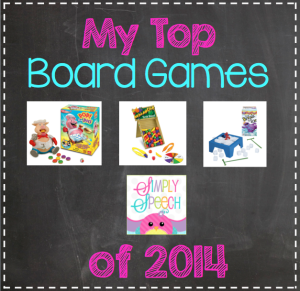
Board games are great for so many things and most kids love them! I like to use them for my groups. Great for teaching and reinforcing sportsmanship/social skills, board games keep therapy feeling like play. Students can work on their goals and keep it fun.
Here are a few of my favorites:

Always a crowd pleaser for the little ones, it is a great introduction to board games, turntaking, following directions, color matching and learning to deal with disappointment (when they have to go backwords).
Kids love to push the dice bubble and hear the noise it makes. Usually, I play it with just two of the four game pieces for each player(because of time constraints). It’s great for artic practice, the student’s repetition of target corresponds with the number on the dice. Awsome for all ages.
Sorry is another favorite. Like Trouble, it is fun for all ages. It’s good to teach sportsmanship and critical thinking skills.
My kids go crazy for this game! I use it as a reward game to keep the novelty going. They get so excited with the anticipation of the “Dad” waking up. The noise can be too scary for some primary students and some kids that are on the Autism Spectrum. I always demonstrate the first time and if they are scared, we move on to something else.
Here’s another one kids love! This is technically not a board game, but it’s great fun for those days when the kids are having trouble sitting still (like during pre-holiday weeks). It’s great for drill. Here’s a tip to help with focusing skills: don’t hand out the Jumping Monkeys all at once. Taking turns, give two monkeys to a player after he has completed his speech target, then he can shoot. Otherwise, the kids don’t pay attention, they are so busy playing with the monkeys while they are waiting for their turn.
This is another fun anticipatory game along the lines of Don’t Wake Daddy. Players have to try to sneak the plastic bones out of the dog dish while he is “sleeping”. The dog snores while he sleeps, if you press down too hard while grabbing a bone, he jumps forward and barks. Again, this is usually too scary for the little ones. I don’t like the cat claw tweezers, we just use our fingers.
Such a fun game for the holidays. I had the original version which has little Charlie Brown, Lucy, Linus and Snoopy figures to use for pawns. It also had a little battery operated Christmas tree that the winner gets to light (unfortunately broken now). Kids have to collect ornaments, candy canes and presents.
Beautiful Speech Life is a participant in the Amazon Services LLC Associates Program, an affiliate advertising program designed to provide a means for sites to earn advertising fees by advertising and linking to amazon.com. I put the links in for your convenience.
Board games are definitely our friends! I bought the more expensive ones on sale. GoodWill can be a great source for board games too, you just have to make sure all the pieces are there. What are your favorites? I am always looking for a new classic!
by Anne Page | Dec 10, 2014 | Freebies, Therapy Ideas
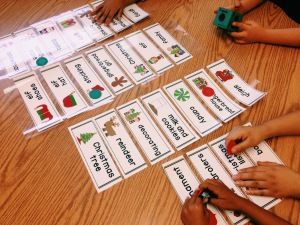
This is one of my groups from this morning. I got these Christmas word cards on Teachers Pay Teachers from Mrs. W for FREE! I laminated them in long strips and laid them out on the table . The kids took turns tossing red or green poker chips and naming the word that their chip landed on. Later in the day I had one group make sentences with the words, another group gave definitions. They thought it was great fun!










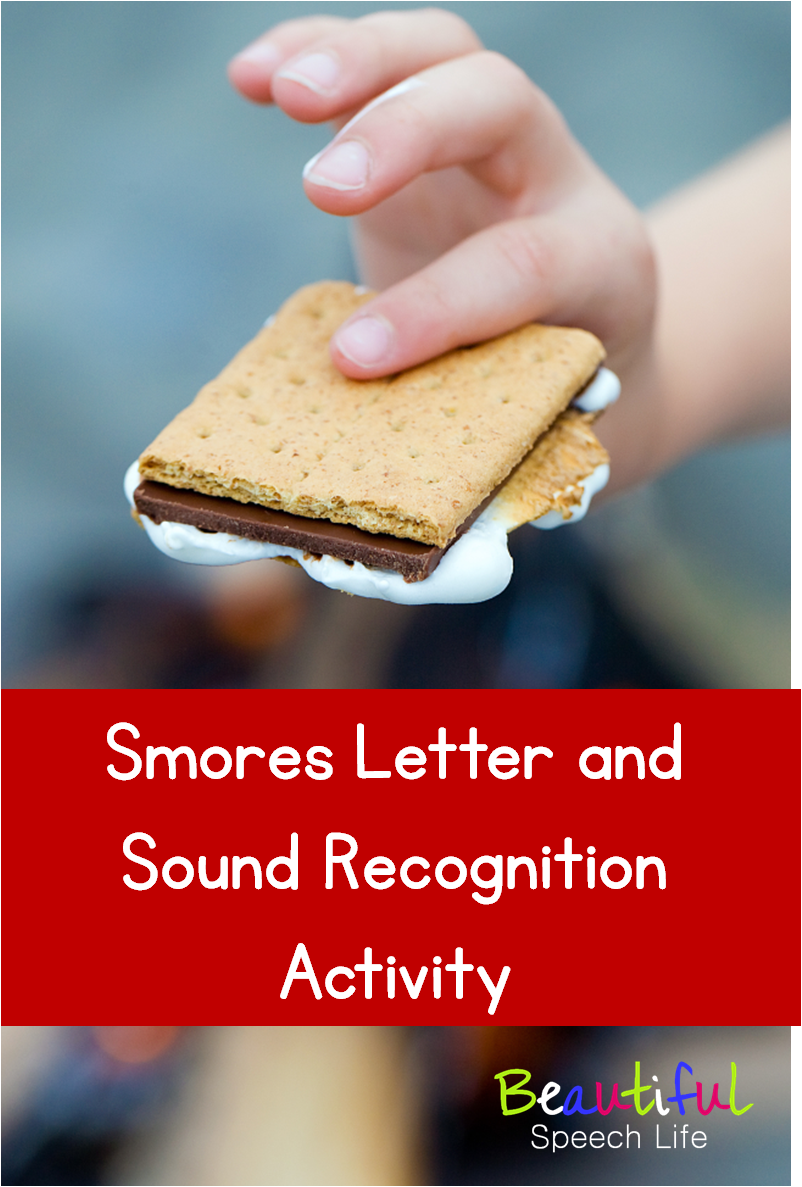






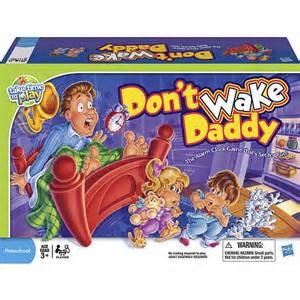
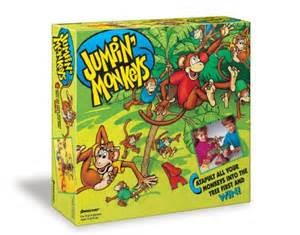



 Hey there I’m Anne Page. I help heart centered SLPs and educators put the fun in functional communication.
Hey there I’m Anne Page. I help heart centered SLPs and educators put the fun in functional communication. 